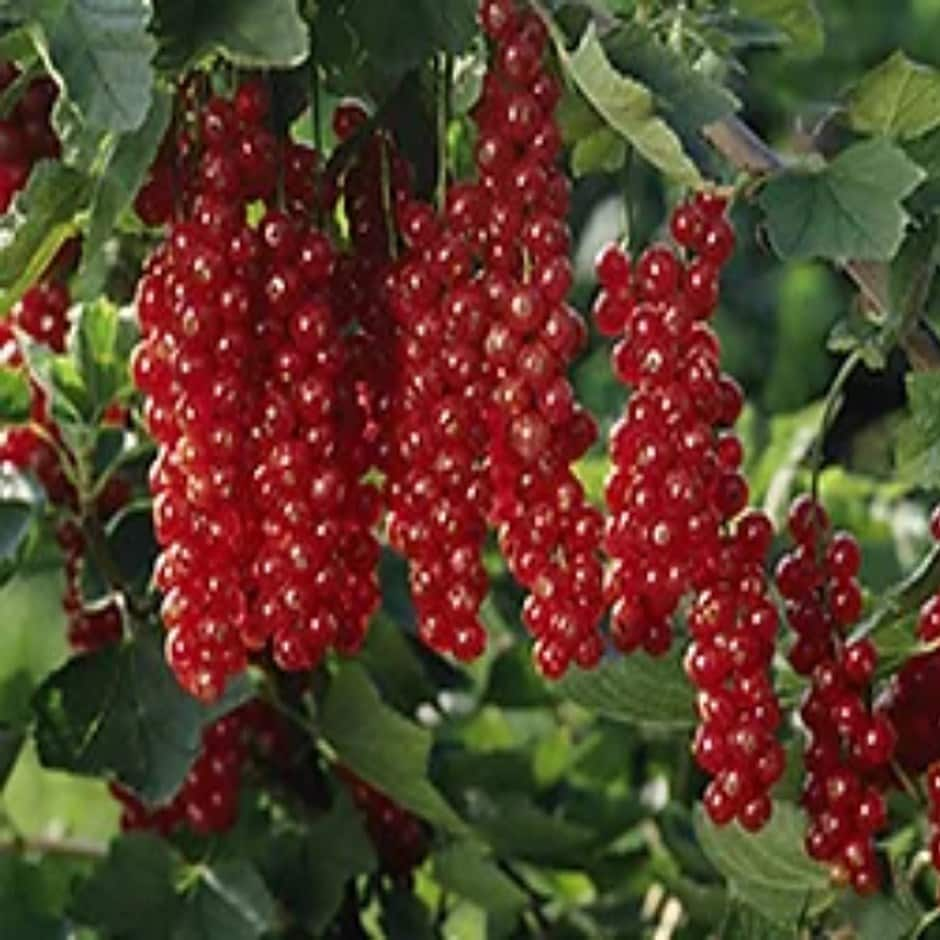redcurrant 'Rovada'
redcurrant
This shrub is deciduous so it will lose all its leaves in autumn, then fresh new foliage appears again each spring.
- Position: full sunor partial shade
- Soil: moderately fertile, moist but well-drained soil
- Rate of growth: average
- Flowering monh: April to May
- Hardiness: fully hardy
This prolific redcurrant cultivar, known for its abundance and late summer harvest, is a deciduous marvel. In spring, clusters of pale green flowers adorn this compact shrub, giving way to a generous yield of large, bright red currants in late summer. These juicy fruits are not only delectable straight from the shrub but also lend themselves to sophisticated culinary creations, while the erect canes are draped in mid-green, aromatic leaves, adding to the plant's appeal. 'Rovada' stands out as the most widely planted commercial redcurrant cultivar for good reason – its long strings of sizeable, vibrant berries are not only visually appealing but also boast an outstanding flavour. This self-fertile and leaf spot-resistant gem is versatile, naturally forming an open, slightly spreading bush or thriving when trained on wires or as a cordon. Beyond its fruit-bearing prowess, it comes endorsed by the RHS for its role as an excellent attractant and nectar source, making it a valuable asset for bees and other beneficial insects.
Prepare the ground well before planting - bareroot plants should be planted out as soon as possible, incorporating some well-rotted garden compost or horse manure into the planting hole. Remove all weeds and dig in plenty of well-rotted manure in to the area. Once planted, apply a mulch of well-rotted manure every spring, as well as a nitrogen and potassium fertiliser. Make sure the plant is watered in dry weather and net the bushes to protect the currants from birds. In the first year, prune back to one bud above soil level in winter. After that prune out weak branches only.

